An adventure in Colombian cuisine
Colombian cuisine seems to be having a moment in the Bay Area. Parche in Oakland has been getting great reviews as has Macondo in Alameda and MaMo in San Francisco. My experiences with Colombian food, however, are extremely limited. I remember visiting a Colombian restaurant in San Jose over 20 years ago, with my then infant daughter. I don’t remember the food, but I do remember the waitress was wonderful and held my daughter for part of the meal. I did recently try a Colombian empanada in New York City, and I cooked a couple of Colombian dishes years ago as part of my international food project. I thus went to Mägo with few expectations at to what Colombian cuisine would be liked – though I did imagine it might resemble that of Venezuela and Ecuador (so my expectations were limited, but not necessarily high).
Mägo serves a “Colombian inspired” seven-course tasting menu for $98. I love tasting menus, and was eager to introduce my teen daughter to one. As it was my birthday, she had to put aside her reticence about trying new food, and go along. She was a trooper. In all, we liked some dishes, thought less of others, but had a wonderful time. Service was good, the setting was pleasant, and the company great.
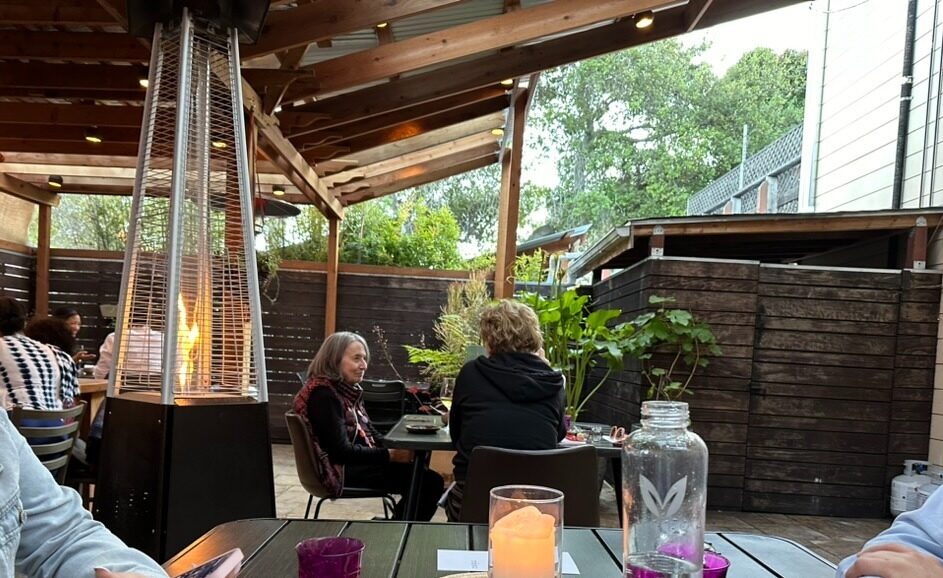
Mägo has a pretty elegant dining room, and an informal patio on the back. My daughter said that it felt like we were in someone’s backyard, and it does have that atmosphere. They have some tables set for four, and a very long family table. A family with children was eating at that table, and later a couple was seated at one end. I felt that was weird. It wasn’t as if the two parties were interacting, and there other tables available in the patio. To me, having to share a table with a family would have taken away from the experience, particularly if it was a date night. Our table for three, however, was perfectly pleasant. Tables are distant enough from one another that you don’t hear other people’s conversations (though kids can be loud).
The patio has pretty strong heaters – you can have them turned down or off, but my daughter was cold – and Colombian music was played through a small blue-tooth speaker. The music wasn’t very loud, so we could speak comfortably. Mägo recommends smart casual clothing, though in the patio that’s probably not needed (at least, that’s how other guests seemed to feel).
The menu, as I mentioned, is fixed and there seem to be at last some changes daily. While the courses are small, we were full by the end of the evening. The whole meal takes about 2 1/2 hours – as there is considerable wait between courses – better for digestion and to enjoy the experience to the full.

The meal started with an arepa topped with salsa maró (a Lingurian fava bean pesto) and huacatay, an herb from the Andes. We all enjoyed it. The arepa was served pretty warm, which definitely was a plus as it made it softer and more comforting. The fava bean pesto had a subtle flavor, I think it might have needed a drop of lemon juice, but it was a pleasant start to the meal.
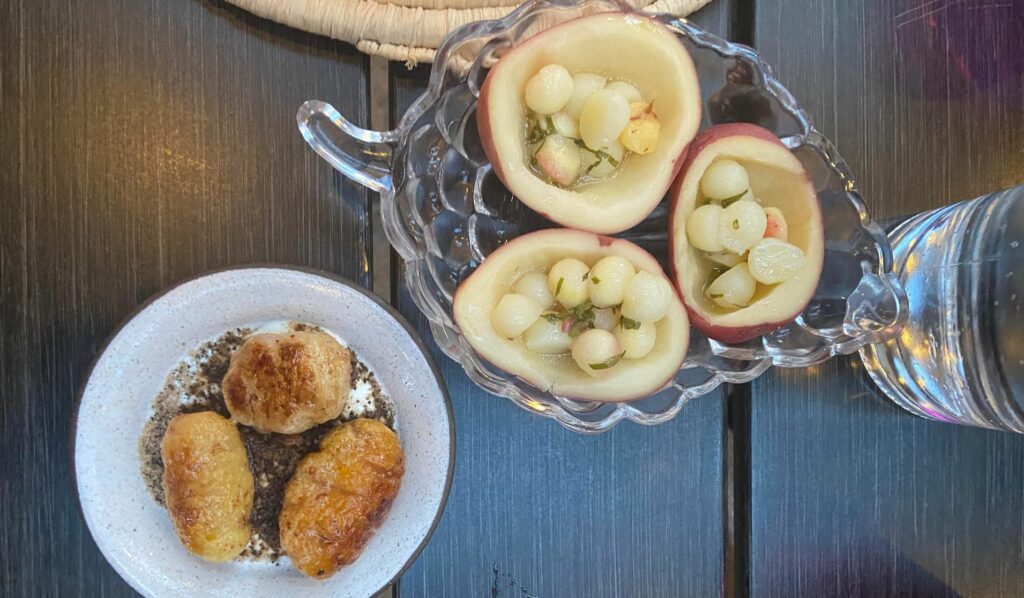
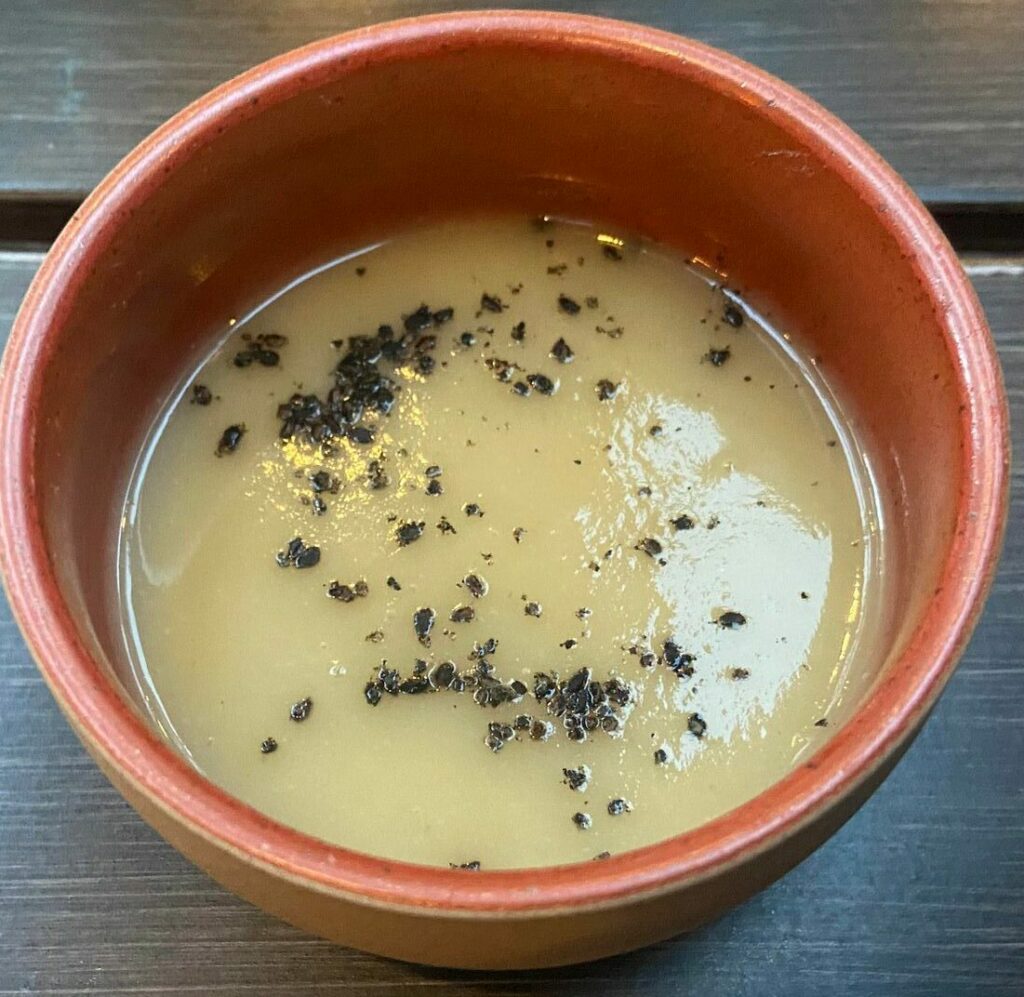
The next course was actually a trio – though as there were three of us, I guess you could say we got a trio of trios of oca and spring potatoes. Oca is a South American tuber that tastes like a somewhat sour potato. The first preparation was, if I remember correctly, boiled and then seared oca served on a bed of sal, chocolate and other spices. It was OK. The oca was too firm, like a raw potato, though I did like the spice mixture it came with. The second, consisted of small balls of pickled oca, served in hollowed raw potatoes. You only ate the inside. I appreciated the novelty of the dish and the presentation, but wasn’t impressed by the dish. The oca, once again, was too firm and it just tasted sour. The final dish was a potato and roasted garlic soup that basically just tasted of over-roasted garlic. It wasn’t bad, but it needed acid. The whole dish improved when I dunked the little oca balls into the soup, though it still wasn’t something I’d order.
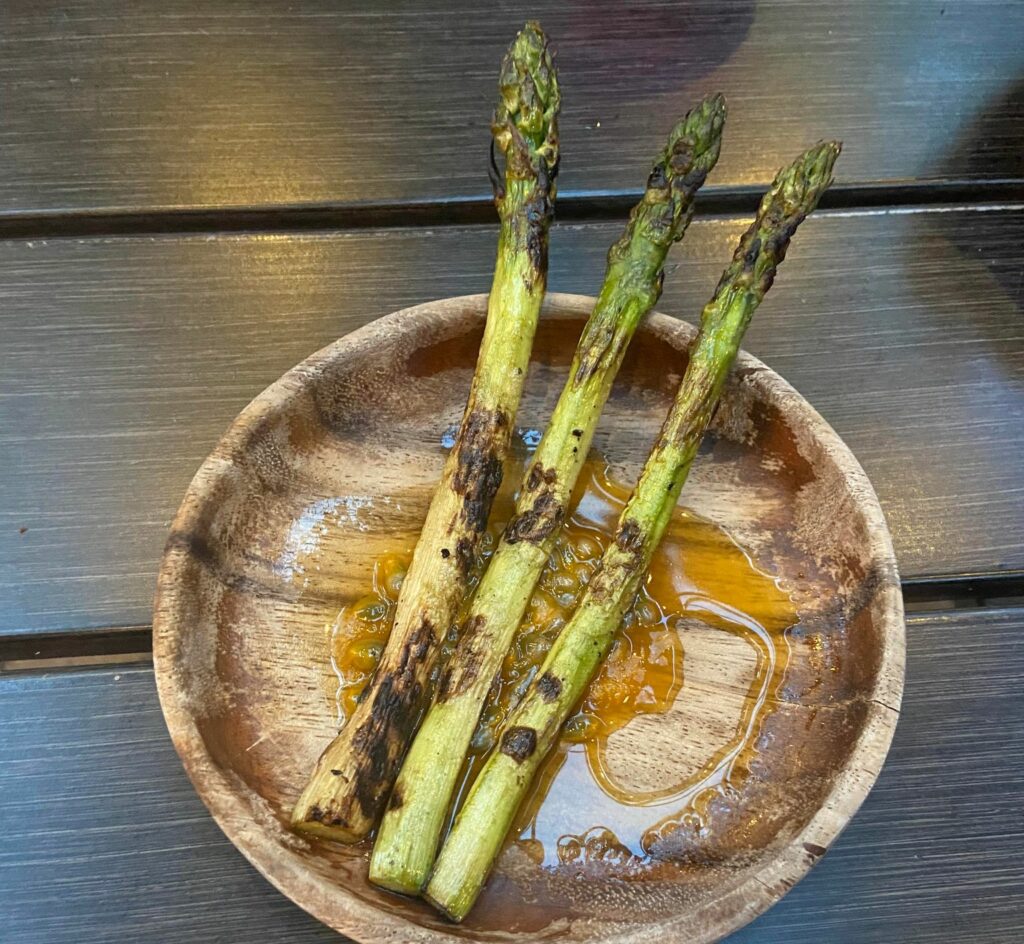
Our next course was asparagus with fermented pineapple. This was my daughter’s favorite dish. She loved the subtly charred asparagus and appreciated how large they were – it turns out she doesn’t like the baby asparagus I often buy and overcook. The pineapple sauce added some great, salty acidity to the asparagus. Overall, a winning dish.
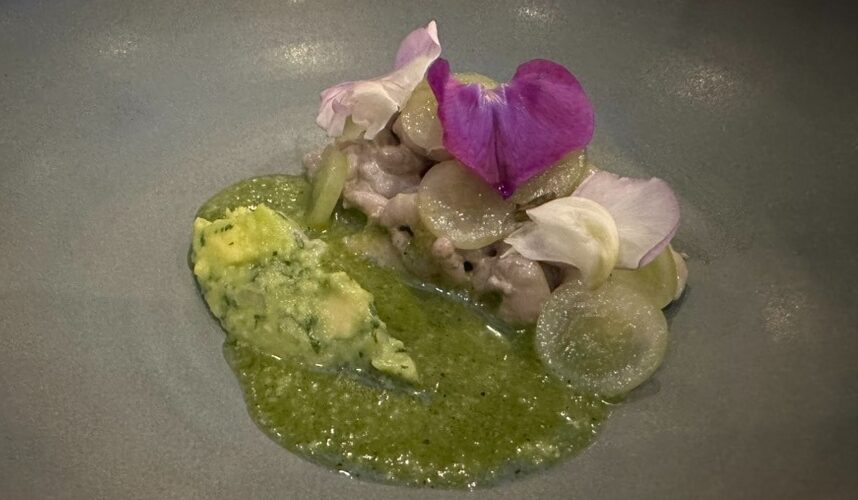
The next dish consisted of shrimp, avocado, green grapes and burn jalapeños. This was a dish that as a composite did not work for any of us – so we all ate what we liked from it. Mike doesn’t like avocado, so he gave it to me instead. He liked the shrimp – and had mine as well – but particularly enjoyed the mixture of textures in the dish. I appreciated the fresh, tarty flavor of the mashed avocado, with the bright sauce and sweet grapes. They were yummy. My daughter doesn’t eat either seafood nor guacamole, and while she got a vegetarian alternative to this dish, there wasn’t much in it for her. But hey, I loved having her leftover avocado and a couple of grapes she left behind and we all enjoyed eating the flowers.
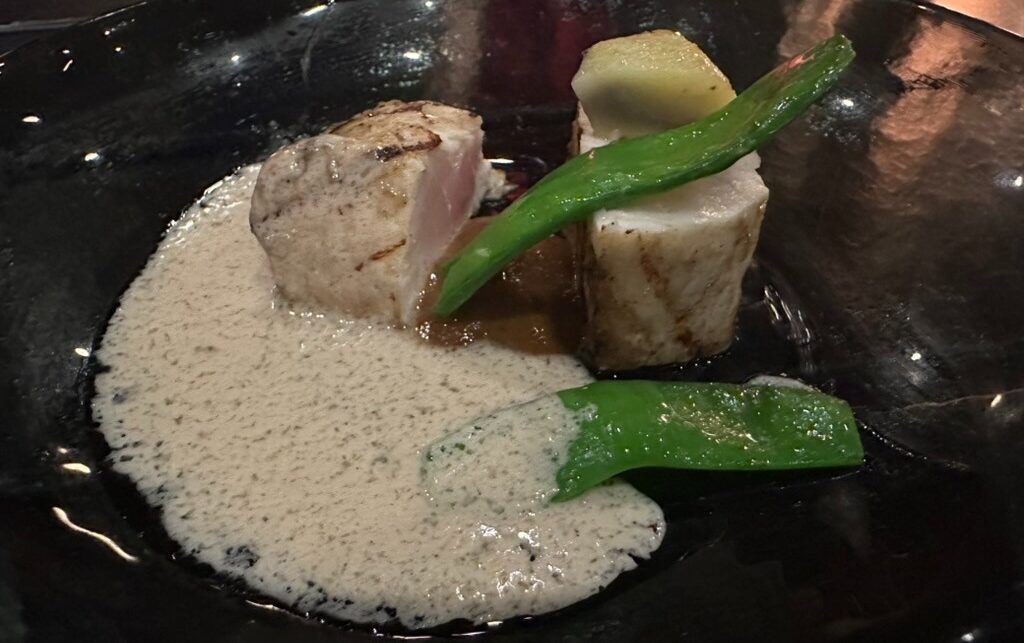
Our fifth course was a real winner. It consisted of swordfish, artichokes and pumpkin seeds in an incredible peanut sauce. The pumpkin seeds were also made into a sauce, and the two sauces together were dynamite. I could eat them all the time. The swordfish was also great. So much so that my daughter tried a bite and claimed she didn’t hate it (which is quite astounding for her). It was perfectly cooked, flavorful by itself and great with the sauce. I’m not a fan of artichokes, but I liked the sauce so much that I ate them.
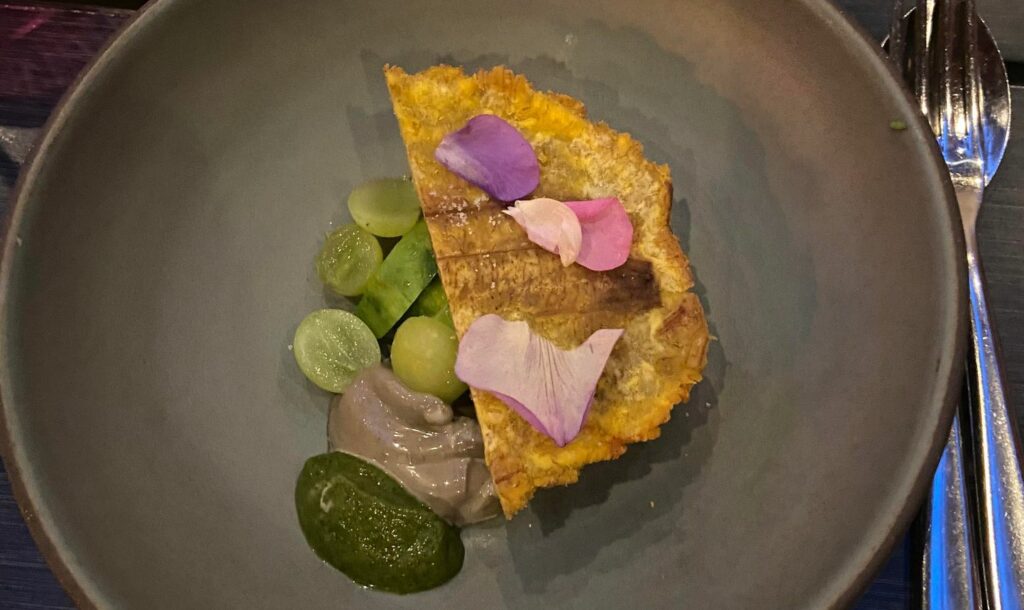
Instead of the swordfish, my daughter got a tostón (fried green plantain pancake) with more green grapes and a green sauce. She also liked it quite a bit. I tried the tostón and I liked it better than other versions, it was less dry, somewhat sweeter and more flavorful.
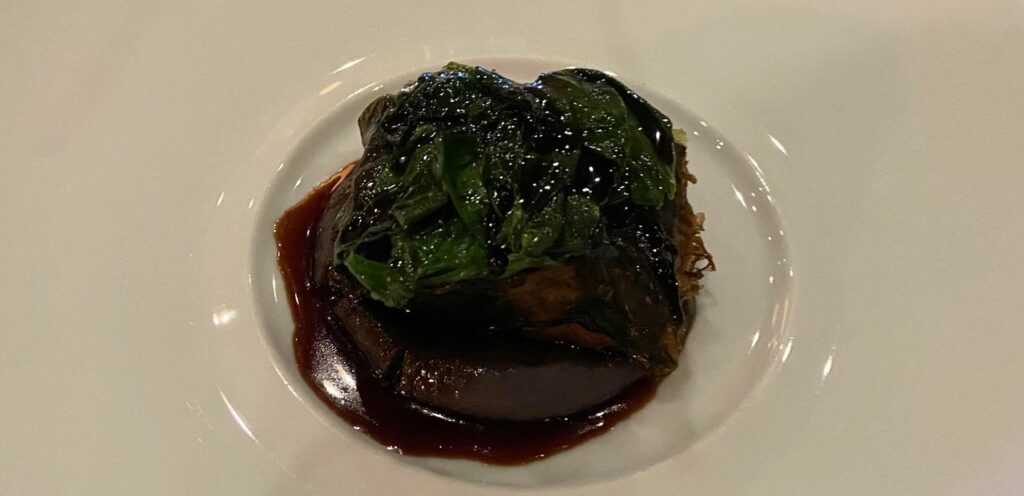
The sixth, main and final savory course was lamb posta negra, black beans and collards. This dish has its origin in Cartagena de las Indias, where it’s usually made with eye of round (posta), though lamb worked very well here. The lamb was braised in a blackened, caramelized sweetish sauce. Mägo served the sauce under mashed black beans, which seemed to mostly have nullified its sweetness. The dish was overall very tasty, and quite substantial – at least it felt so after the previous five courses. We all enjoyed it – though my daughter only had a couple of bites (more than expected, given her aberration to lamb).
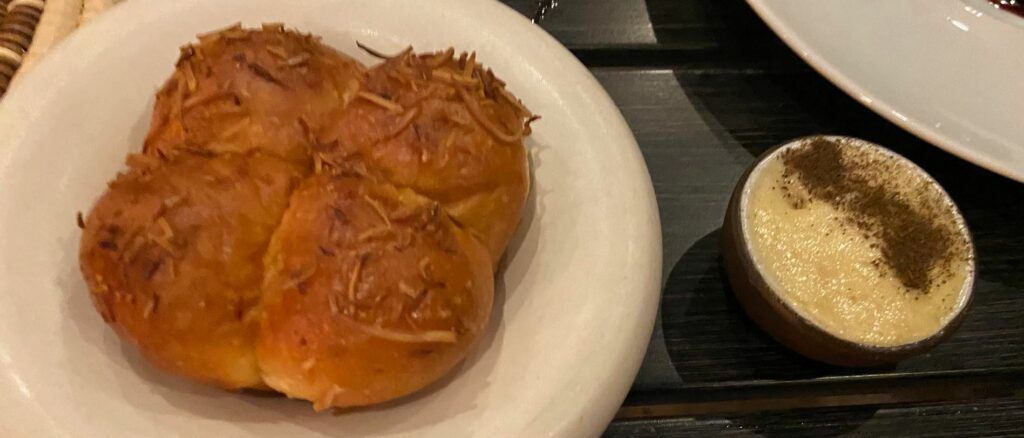
Along with the beef, we got pan de coco and whipped plantain butter. This was the second favorite dish for my daughter, and we all enjoyed the fresh buns. I didn’t realize the butter was made of plantains until re-reading the menu to write this review. I looked up plantain butter since, and found that there is a commercial version of it from Jamaica made from plantains and cream, while UCLA serves its own vegan version based on palm oil. There are many recipes online with a variety of ingredients, but if I still had a vegan daughter I might try to experiment and make my own.
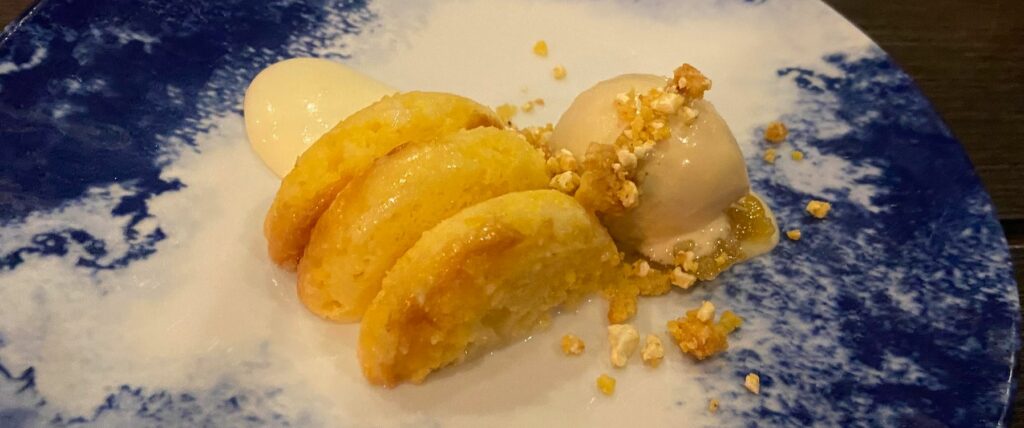
Dessert was corn cake with a meyer lemon ice cream and panela bits. It was delicious and my favorite dish of the evening. I just love corn cake, in particular its grittiness and this one was perfect. The flavor combination and the crunchiness of the panela bits was superb. It was also a perfectly sized dessert. Of course I wanted more, I had no room for it.

The final dish of the evening were dulces, served in a dish that said Happy Birthday (it was my 55th!). These consisted of some candy I didn’t even try, as I’m not a fan of candy, but which apparently were good, and tiny alfajores with a tiny portion of dulce de leche. They did need maybe half a spoon more dulce de leche, but they were very tasty and super cute.
Mägo offers a wine pairing for $70 and a non-alcoholic drink pairing for $55, but we no longer drink that much wine nor consume so many sugary drinks. They do offer complimentary tap or sparkling water, and of course, I ordered the latter. That must have been the worst sparkling water I’d ever tasted. I’m not someone that is generally picky about sparkling water. I will drink any of them. I pretty much always order it with my dinner, and have had different brands in different states, countries and continents. This is the first time I find one that I dislike. If they make it themselves, it’s time to change the filter.
I had a glass of the Altos las Hormigas, Valle de Uco, ‘21 Malbec ($20) with dinner, and it was very pleasant though extremely overprice. Mago sells a full bottle of this wine for $80, while it retails for about $16. Usually restaurants mark up their wines to about twice of retail price, five times seems rather excessive. It occurs to me that it’s how Mägo is able to keep their food prices relatively low. In any case, Argentine wine is usually an amazing value, so I’m not complaining about ordering it. My daughter had the passion fruit agua freca ($8), she hadn’t had passion fruit before and really liked it. It’s pretty sweet, however, as you’d expect, so one was enough.
Service was efficient but somewhat distant – there weren’t any tones of friendliness. They didn’t seem to be any more convivial with other tables, so I don’t think it was personal. Different servers bring different courses, and they always explain what they are. Silverware is replaced between courses. We never lacked for water, and they turned up the heat when we asked – but there just wasn’t a friendly vibe. Not that one is necessary.
In all, we had a great time. I’d recommend trying it, for flavors that while not necessarily super successful (to me) are somewhat novel and interesting. Food wise, I feel it’s a very good value for the experience you get.
Mägo
3762 Piedmont Ave
Oakland, CA
(510) 344-7214
W - Sa 5 - 9 PM
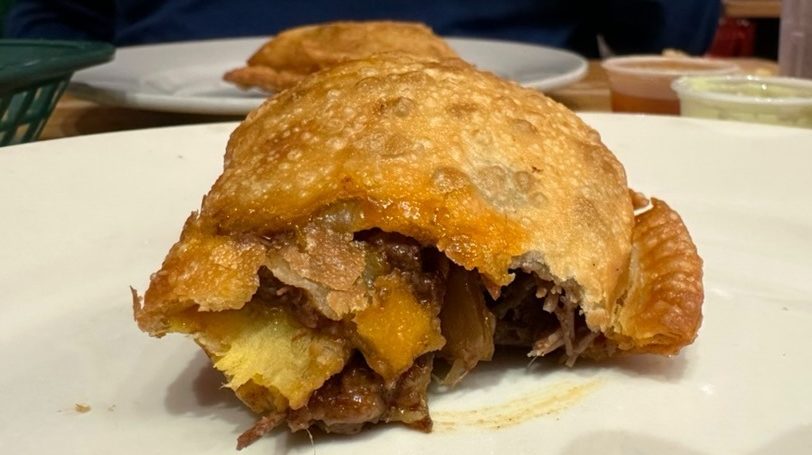
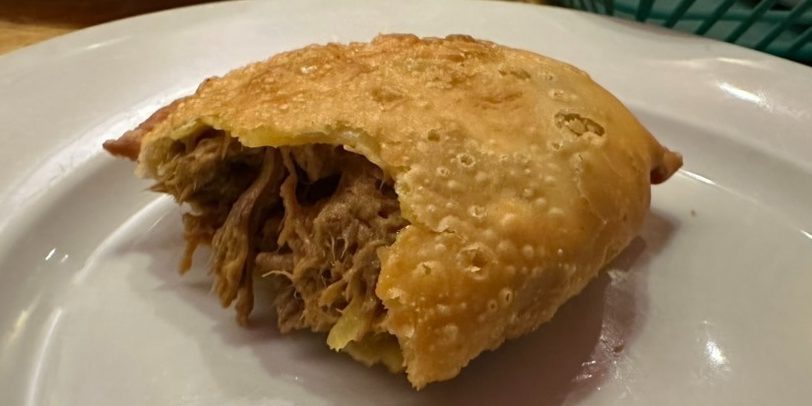
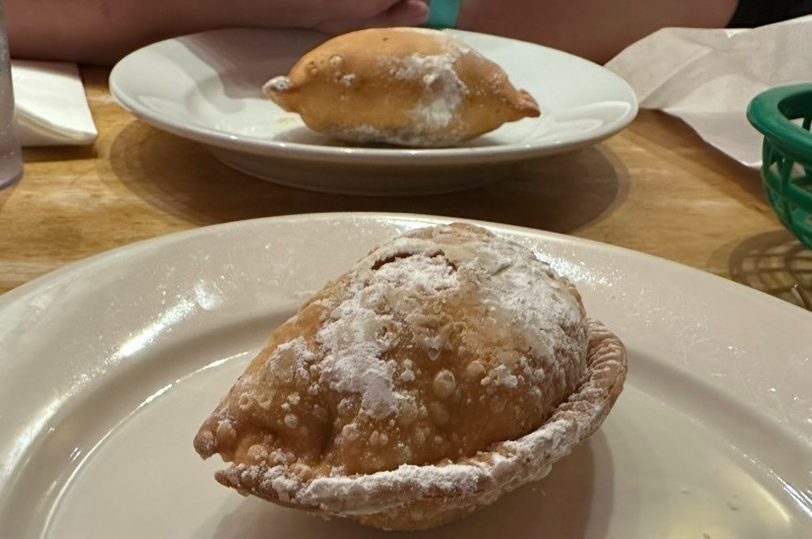
Recent Comments